
Simply put, I love this Swedish wheel. Metal clad, with a long and rounded waist, it is utterly unique. To top it off, it is one of the most pleasurable wheels for spinning that I have ever used.

The table, if you can call it that, is unusual from end to end. There is a good-sized hole in the wheel end, perhaps where it was mounted on a lathe.

Each end of the table top is cut flat, making room for the wheel posts and mother-of-all. Likewise, the whole length of the table bottom is flat.

But between each flat end, the table top narrows and rounds to a caterpillar-like middle, making it easy to pick up and carry.
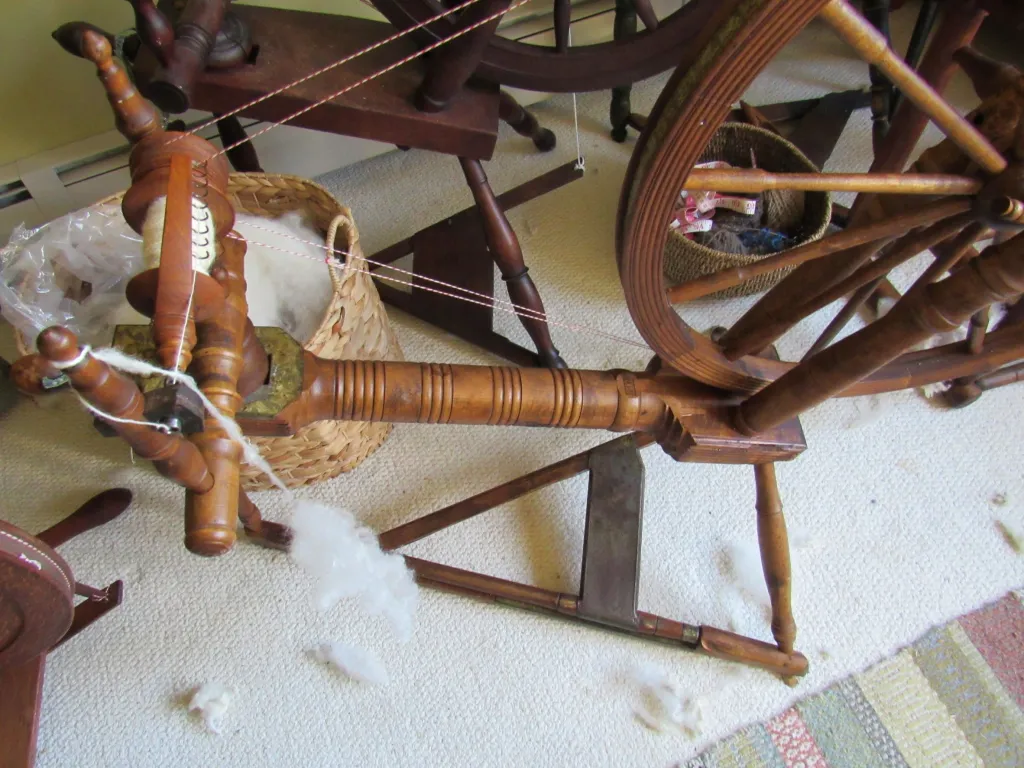
The wood is nicely turned but knot-ridden. Several areas still retain some dark bark.

The sides of the flat sections have multiple grooves.
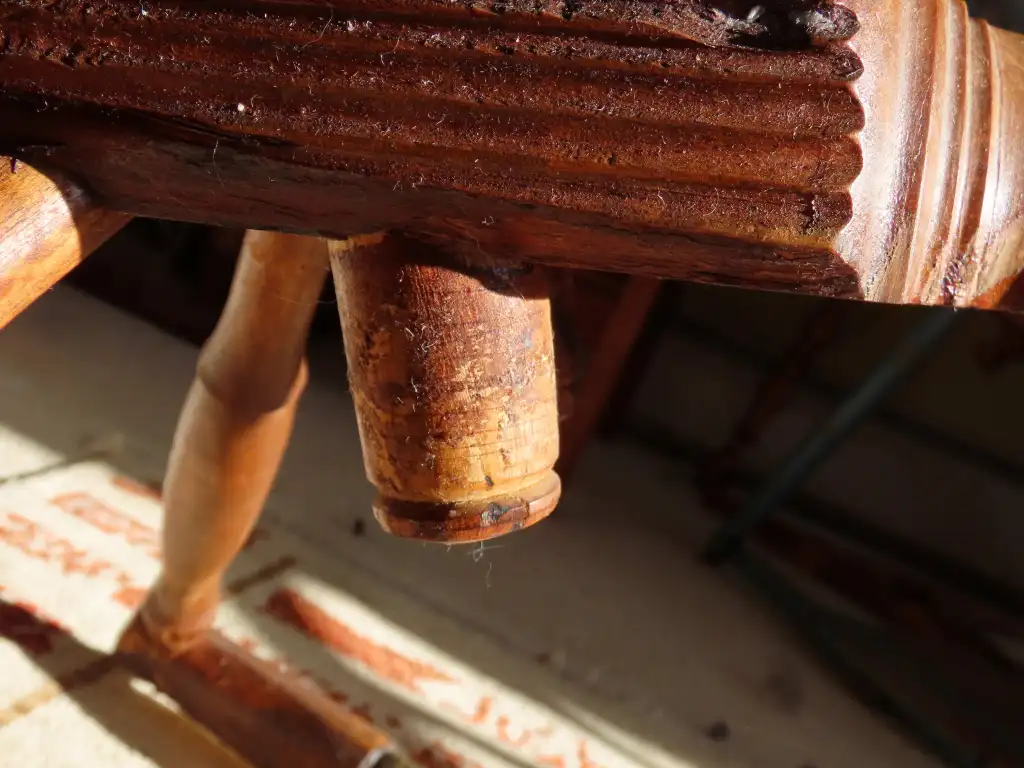
But most interesting is the galvanized metal neatly covering the table at the flyer end.

Its spangled surface gives the wheel a slightly festive look.

Unlike the familiar silver of modern galvanized steel, this metal is a golden greenish color.

The mother-of-all sits atop the metal and is tightened in place with an under-table wooden screw.

Two keeper pegs flank the tension screw.


A distaff hole is on the spinner’s side, but the distaff has been lost.

Scribe marks are found throughout, most utilitarian, but some appearing to be decorative.

The maidens have three-tiered tops.

The leather bearing is a sandwich of four thick layers, cut in a distinctive style.


The flyer is relatively petite, perfect for flax.
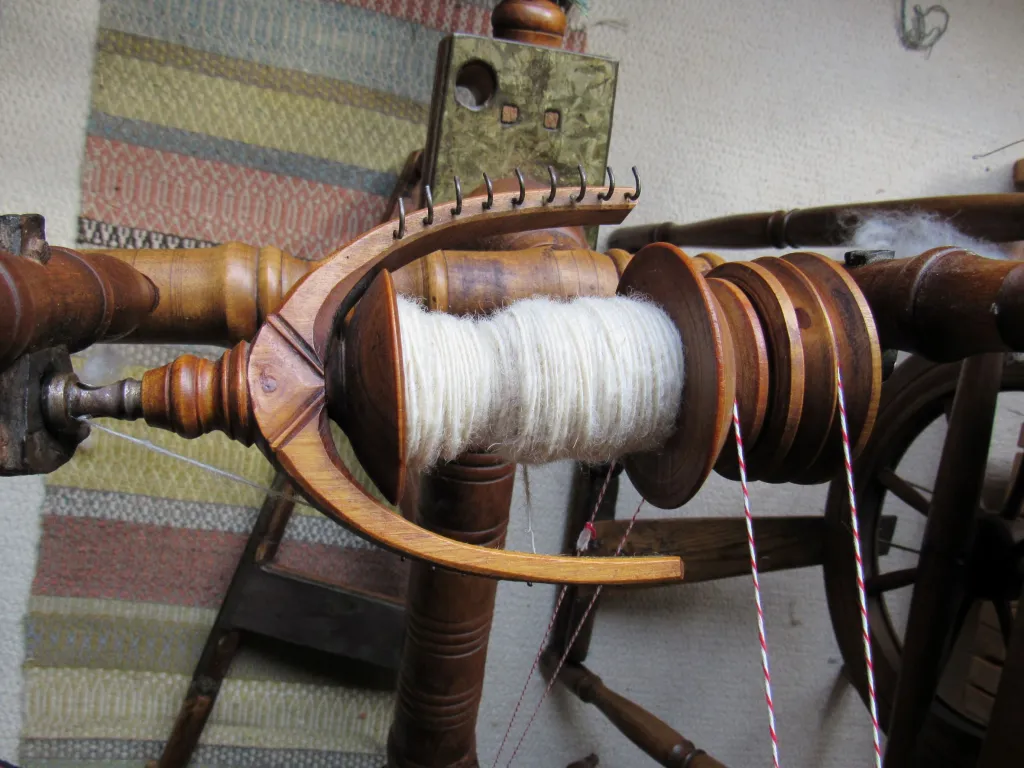
Two maker’s marks are embedded in the table end along with several star/sunburst/wheel stamps.
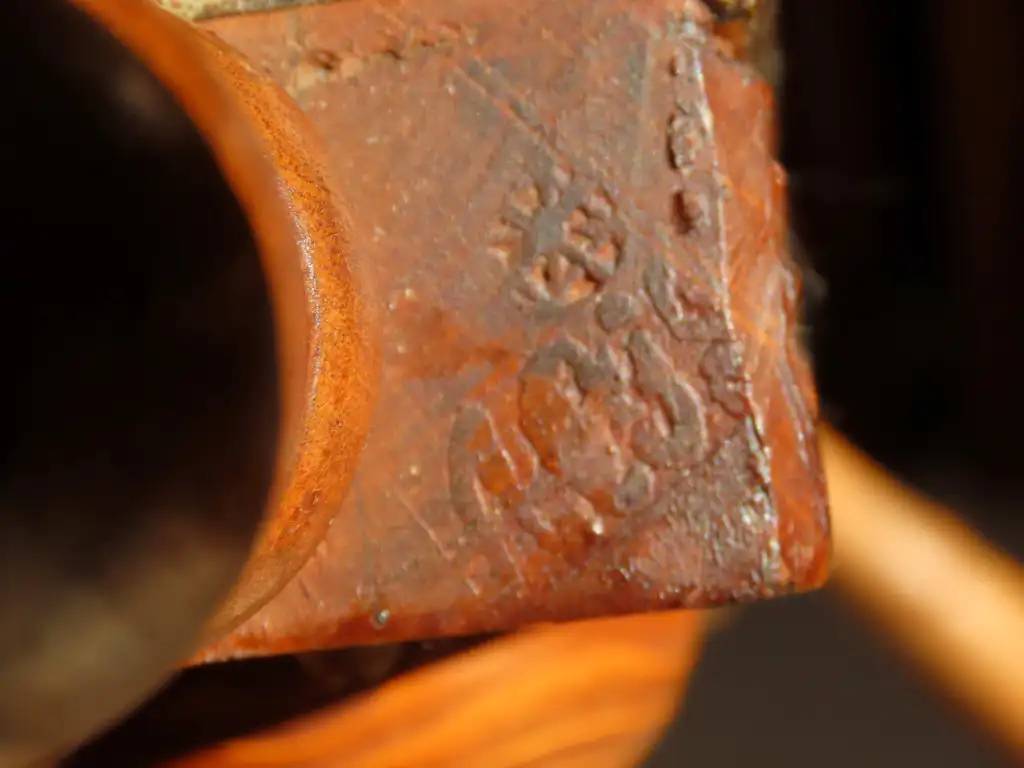
Another maker’s mark, on the table top, is easier to make out.

It appears to be “A P J S” or “A upside-down-G J S. “

The drive wheel has six sections/felloes with radial joints.

The joints are unusual in that each felloe has either mortises or tenons on its ends, rather than one on each end, which seems to be more common.

Moreover, the tenons do not extend all the way into the mortise, but instead butt up against a second small piece of wood.

Each joint is pegged. The spokes, however, which straddle a small step on the inside rim, do not have any visible pegs and likely are pegged through the outside of the rim. We cannot tell for sure, though, because the rim is encased in more galvanized metal.
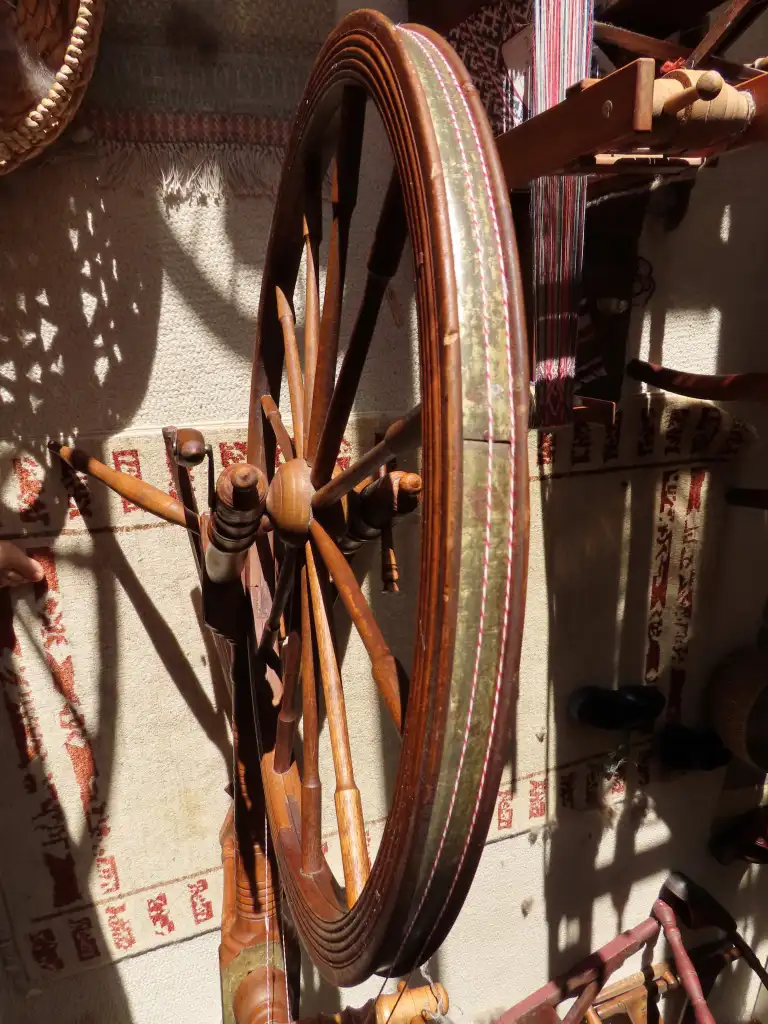
The axle arm for the footman is straight rather than curved or S-shaped

and the axle caps appear to made from “masur,” a curly birch found in Scandinavia and Russia, including some areas of Sweden.

The treadle is encased in metal, which has started to rust.


The foot-side treadle bar has one metal-encased end and rests and pivots in a cross bar, also partly encased in metal.

One pivot pin is covered by a small, rotating wooden piece.

Thick metal wire attaches the footman to the treadle bar.
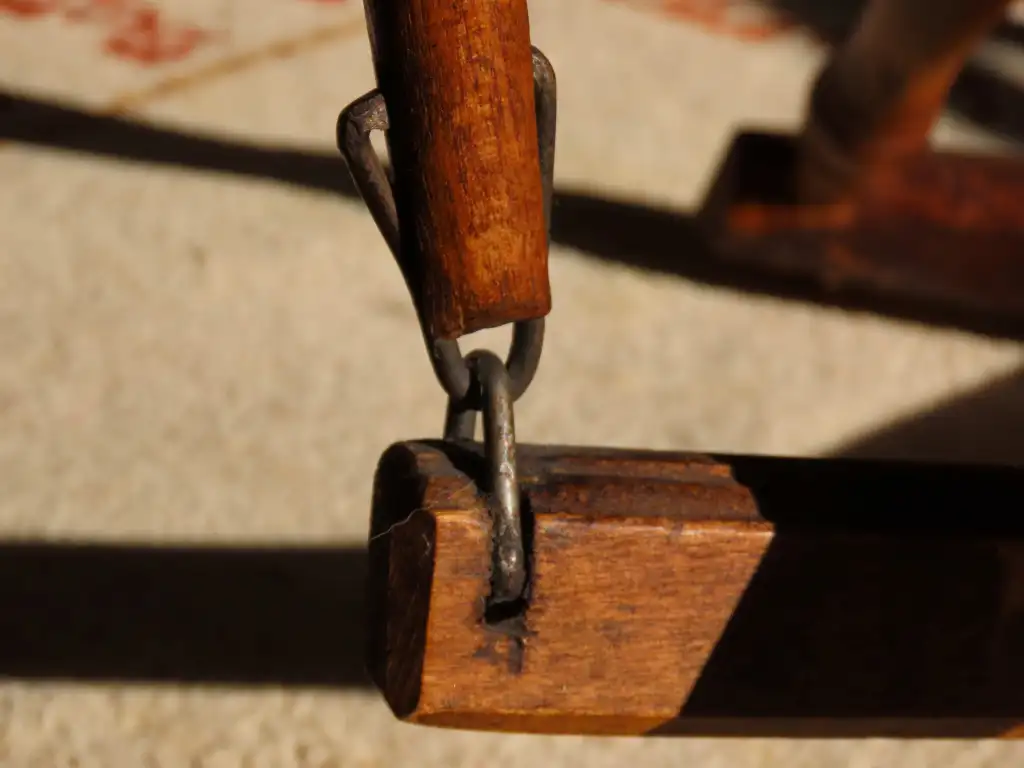
The elegant pointed feet extend through the cross bar.

Variations on this drop-in style of treadle are often seen on Finnish wheels.

The non-spinner side foot has a nail embedded in the bottom, something often found in Quebec wheels.

It seems with so many unique features—the turned table, the galvanized metal, the masur wood, the initials–we should be able to find out where this wheel was made. But I have not been able to find its maker or town of origin, although I think we are getting close. The seller of my wheel bought it in Dalarna many years ago when she lived in Sweden. Dalarna is a traditional province (landskap) and administrative county (län) in central Sweden with a rich cultural tradition of handcrafts.
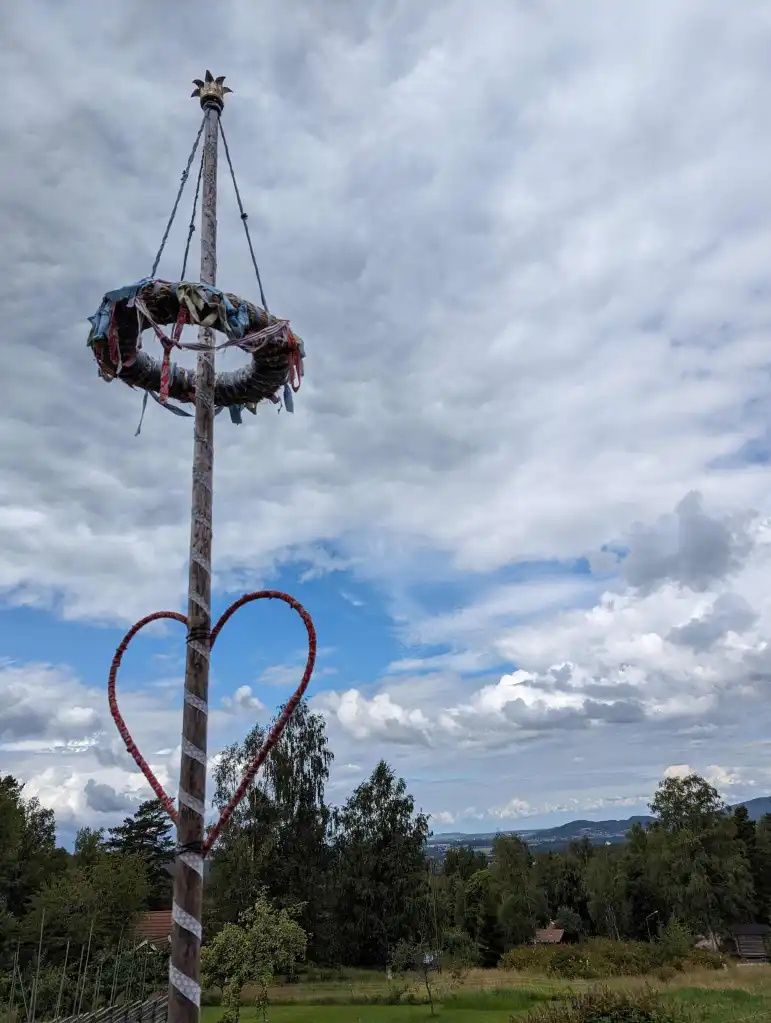
There are about a dozen of these wheels of which I am aware (I am sure there are plenty more in Sweden) and many have some association with Dalarna. I first learned of them on Ravelry where Sheila MacIsaac, who lives in Scotland, started a discussion about a likely Swedish wheel that she had recently bought. Sheila’s wheel appears older than mine, with rusted metal and no metal at all on the treadle.

The initials on her wheel are slightly different, too.

They appear to be “A G J S(backwards).” Another wheel on Ravelry came over to the U.S. from Stöde, Sweden (north of Dalarna) where it was given to the owner’s great-grandmother in 1894. Its maker’s mark is similar to mine but the second letter appears to be a backwards “G.” A third belonged to a family who had lived in the southeast part of Dalarna before coming to the U.S. Interestingly, that wheel does not have a maker’s mark, but the handwritten number “17” on various parts. While my wheel does not have numbers on the outside of the parts, I did discover numbers penciled in hidden areas where the wheel uprights (number 3)

and legs (number 2) are inserted into the table.

Also, several of these wheels have shown up on sale sites, including this wheel in Norway.

While the turned part is thicker, the maidens, drive wheel, and metal covered table appear to be very similar to the others. Another wheel recently for sale came to the U.S. from Sweden with the seller’s ancestors. But the only information she had on where they had lived was that an uncle worked at a copper mine. That mine would likely have been the large Falun mine, which is in Dalarna, too.

The Dalarna connection was reinforced by the photo above of two wheels, which Swedish spinner, weaver, and teacher, Marie Ekstedt Bjersing, posted on Facebook. The wheels are part of the collection at Sätergläntan, a century-old handcraft school in Insjön, a small town in the middle of Dalarna.

The wheels were donated to the school by two different people, and, from what Marie knows, they were from southern Dalarna. I was fortunate to take a weaving class at Sätergläntan this past summer and soon after I arrived, made a beeline to to their wheel collection to check out the two wheels.

Both are in good condition. One has initials almost identical to those on my wheel

and the other one’s are similar to those on Sheila’s wheel.

I made some inquiries locally (with help) to see if anyone had a clue as to where these wheels were made, but came up empty-handed.

I spent some time spinning flax on one of the wheels and, as with mine, it is a joy to spin on. As Sheila commented about her wheel, the spinning is “almost effortless.” Whether it is the metal on the rim giving the wheel some extra weight and momentum, something about the long low design, or some other design feature, these wheels have a spinning quality that is hard to match.

While examining Sätergläntan’s wheel collection, another wheel caught my eye. Although it had a flat table, the drive wheel, spokes, drop in treadle, maidens and grooved sides were markedly similar to the turned-table, metal-clad wheels. The initials were different, but the wheels certainly appeared to be related somehow.

Could it provide some clues? Maybe. More to come in the next blog post.
Thank you to Sheila and Marie for permission to use their photos.
Update on January 12, 2024: Just as this was posted, another of the thicker-waisted versions of this style wheel came up for sale in Hofors, Sweden, which is just east of Dalarna. It only has metal on the table under the mother-of-all. But, as with my wheel, there is what appears to be bark left on the table edge.
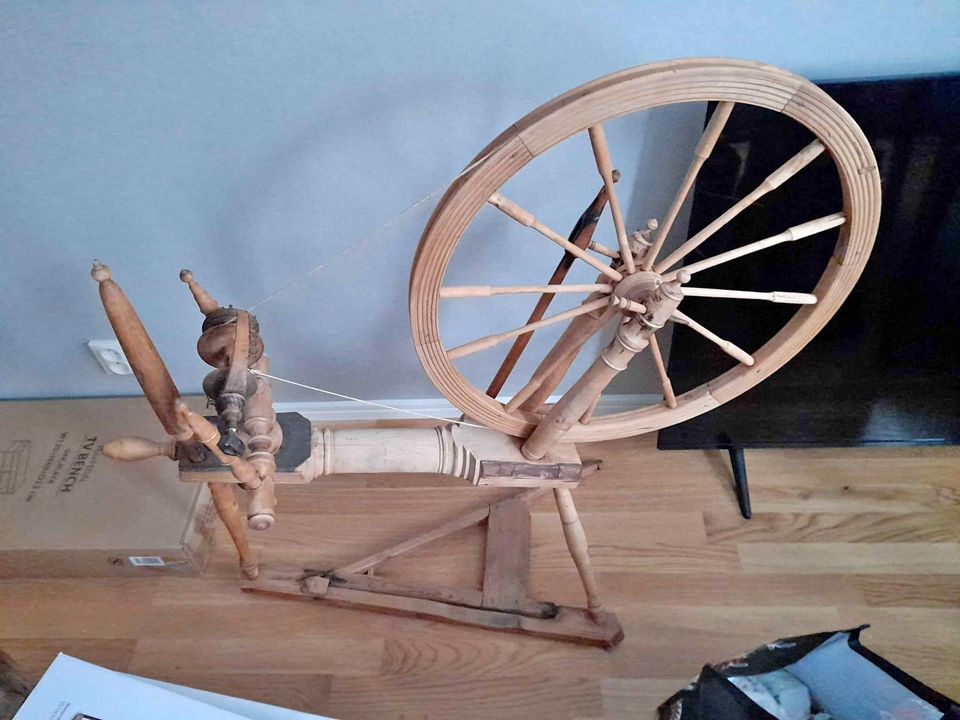
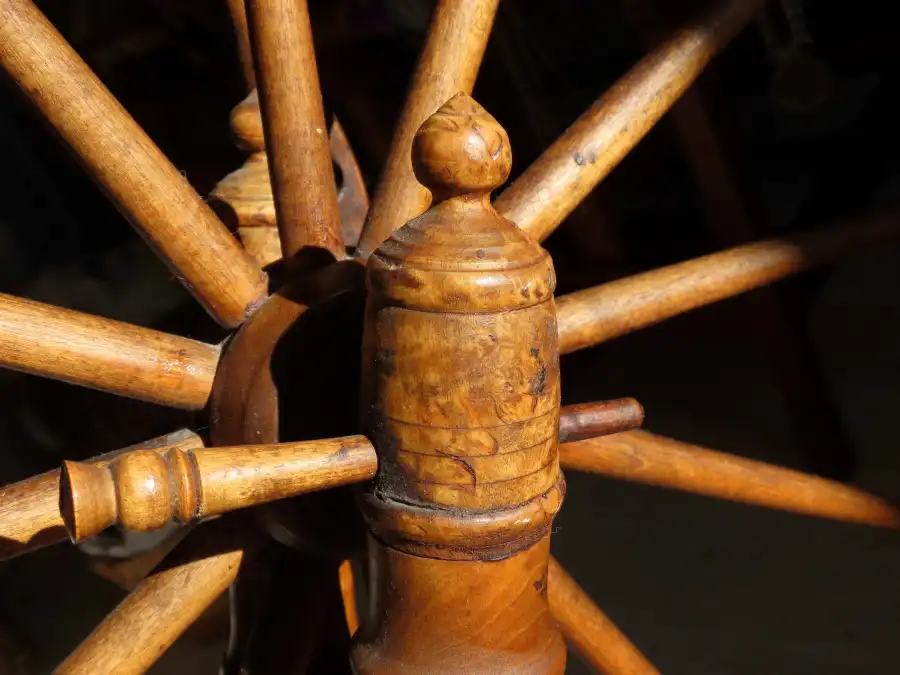
What a fantastic wheel! I’d love to own one…
LikeLike
It isn’t as pretty as many of the Scandinavian wheels but I really, really love this wheel! They do occasionally come up for sale, so you might find one.
LikeLiked by 1 person
Beauty is nice but secondary. Good spinning is crucial. I don’t live in the US so finding one is not very likely. Love your blog!!
LikeLike
Thanks. It’s nice to get feedback. And, yes, the good spinners are the wheels I treasure the most. Some just seem to sing to me. My theory is that these wheels were treasured (probably for their spinning prowess and unusual features) and their owners were reluctant to leave them behind when they left Sweden. And, if you are in Europe, they do seem to show up occasionally in the Norwegian and Swedish sale sites, so you might be able to arrange someone to pick it up while you can figure out a way to get it!
LikeLiked by 1 person
I guess those beautiful wheels were also taken to America because they must have cost a small fortune. And they probably needed the wheel to assure a (small) income while they were trying to set up a new life. I think many immigrants would’t know exactly what to expect in that far away continent.
By the way, are all the wheels in your blog yours?
LikeLike
Yes, there are letters home from Norwegian immigrants urging others to bring their wheels with them. All the wheels in the blog are mine. I have quite a few! Oddly enough, one of these metal-clad wheels, only with the fatter waist (like the one in Norway that I posted) just came up for sale in Hofors, Sweden. If you are interested, it is on Facebook marketplace.
LikeLike
Ah, interesting information!
I congratulate you on your beautiful flock!
I have never visited the FB marketplace before. I’ll have a look! However, buying an antique wheel from a far away country without being able to try it first is a big gamble. If I do I’ll let you know on our FB-group!
LikeLike